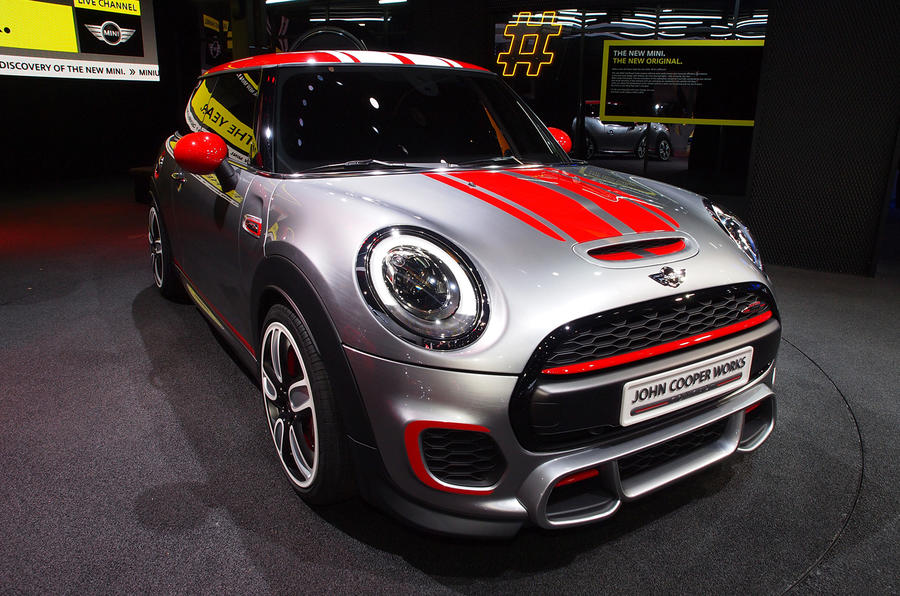Mini brand boss and board member Peter Schwarzenbauer believes that having a UK design studio for the brand would be “a good idea. We have to emphasise the British thing a bit more.”
Currently all Minis are designed in Munich, but speaking at the Detroit model show, Schwarzenbauer said that having an additional UK studio would ease the task of giving the cars a British character.
Schwarzenbauer also revealed that there’s a debate internally about how wide the Mini family should be. Asked whether there could be a Mini SUV, Schwarzenbauer said that “we’ve got up to 10 ideas for new Mini models.” And the new UKL platform that the latest Mini is based on allows architectures of ‘between 3.8 and 4.5 metres’ - longer than the biggest Mini Countryman today.
But in parallel the company is also working on the idea “that less is more. We could concentrate on four or five models that are heroes” he says, by which he means models developed to a very high standard. Also being considered are models that less obviously resemble the core Mini. “Do they all have to look like Minis? The Mini fans say yes.”
But Schwarzenbauer suggests that if the cars “have a certain DNA, like a family of kids,” then there might be scope for models that diverge more substantially from the Mini hatchback, a strategy that he says “would open doors” to more variety.
Whatever the outcome of this debate, the results are a long way off, these cars planned to replace the third generation of BMW Minis being launched now at the end of this decade.
This more radical approach to the Mini range is not under consideration because the brand is struggling, incidentally - a record 305,000 Minis were sold globally in 2013, demand has remained strong for the outgoing hatch right to the end of its life, and Schwarzenbauer says that the potential in China is far from realised, with less than 10 per cent of sales coming from this country.
In the more immediate future, BMW is considering new ways to personalise the Mini, including the possibility of changing features later in the car’s life. Schwarzenbauer cites airvent trims and other decorative pieces as examples, these alterations possible as long as they don’t affect the car’s crash behaviour. Dealers would make perform these swaps, but Schwarzenbauer envisages elements that could be DIY modifications.
More radically, he says BMW is also considering downloadable apps that would allow the car to be upgraded, and downgraded too if the next owner didn’t want to pay for the feature. As an example he cites seat heater elements, which would be built into all Minis and activated by buying an app that the next owner could decline if they didn’t want it. In effect, it would be like renting certain options.




Join the debate
Add your comment
Price too high
Where the design office is located is not important
MINI mini
Autocar wrote:Currently all
That would explain the current model's oversized features, awkward detailing and generally disappointing design. The only Mini that looked generally OK if still somewhat cartoonish is the first generation. It's been distorted and made even more bloated ever since.
optima wrote:If MINI is the
As much as I dislike MINIs and their fisher-price interiors, the brand has a very strong image and identity. Yes, it might be what Issigonis dreamt of, but the cache that b=customers buying to is still there. I actually thought BMW had kept a design office in UK for MINI, it appears not. It is a shame as they need to immerse the design team in British culture. If Kia can have a design office in Worthing, why can't BMW? I am sure it would help with BMW too. They should really set up near Cowley, but I fear for 'trend analysis' it will be somewhere in London's East end. It worked for Nissan, so no reason why the capital can't host MINIs design future.